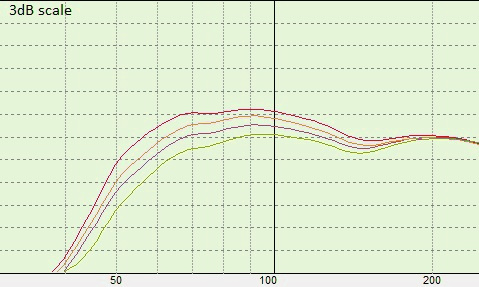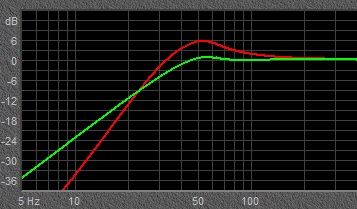Issues generated by speakers positioning mainly concern low frequency response. Electrodynamic speakers are small in comparison with such frequencies wavelength, therefore the sound pressure is proportional to the radiation load: in other words, the closer the speaker is to the intersection of two or more walls, the higher the pressure will be.
If the sound is generated in angular conditions comparable to a wall-embedded sound source, the radiated power will be twice as high as if it were generated in free space. On the other hand if radiation is confined by two intersecting walls, the power output will be four times greater than in free space. If the source is placed in a corner formed by three mutually perpendicular boundaries, instead, its power output will be doubled once more. These conditions are true as long as the source and the distance between these walls are sufficiently smaller than the relevant wavelengths.
Such considerations show how low frequencies are critical during domestic-listening systems set up. This is true even in acoustically equipped rooms: low frequencies are distributed according to rooms geometry and speakers positioning, because they characterize nondiffuse resonance modes and sound reinforcement caused by radiation load.
Here is a quotation from Groh’s studies on low-frequencies acoustics: “The ultimate determinant of fidelity to an original source is the sound field at the listener’s position. Even if a loudspeaker system is capable of delivering uniform power to a room, the energy is redistributed by the room nondiffuse resonance modes, and the listener’s location with respect to these standing waves is not knowable. Nevertheless, if loudspeaker systems are designed with due regard for those boundary effects, it will certainly reduce the average deviation from the ideal sound field”.
After these words, Groh described a method of placement equalization. This useful technique is rather distruptive of conventional listening rooms’ arrangements.
The assumption of those considerations has enabled our company to find a solution to low-frequencies reproduction issues: Atomica Audio’s products are equipped with the Atomica Reflex. The Atomica Reflex is a patented resonator which has been created to be easily set by the user according to their tastes and their listening room. Such device solves the issues caused by the listening room or listener’s and speakers’ positioning.
The Atomica Reflex features a resonator whose extension can be adjusted by means of a knob positioned on each speaker side. The lowest resonator extension guarantees maximum bass emphasis and power, while the pipe extension causes a graduated low frequencies damping. Maximum extension causes pipe blocking and no low-frequencies emphasis. In other words, the system can work both like a reflex and a closed box passing through middle positions, allowing great adaptability.
The following graph shows a prototype’s response. It is a small box fitted with a 6” woofer equipped with the Atomica Reflex (red line: max pipe extension; green line: min pipe extension; violet and yellow: two middle positions).

To better understand the possible applications of this device, the following graphs show simulated responses of a classic reflex floorstanding speaker, in different positions.

Speaker distant from side and rear walls

Speaker at 20 inches from side wall, 3 feet from rear wall

Speaker at 3 feet from the side wall, close to the rear wall
Graphs 2 and 3 are now shown again but with the addition of the resulting response after setting up the Atomica Reflex (green line). Speaker and position are the same.


Thanks to the Atomica Reflex, it is possible to abtain the best calibration not only in the situation shown in graph 2 – possible even in the best equipped rooms – but also in challenging situations like the one shown in graph 3. The user can set it up easily every time adjustments or positioning changes are required, without any electronic artefacts.
REFERENCES
- Allison RF, Berkovitz R, “The Sound Field in Home Listening Rooms”, 1972.
- Allison RF, “The Influence of Room Boundaries on Loudspeaker Power Output”, 1974.
- Davis D, “Further Comments in Directivity Factor”, 1973.
- Groh AR, “High-Fidelity Sound System Equalization by Analysis of Standing Waves”, 1974.
- Robber RJ, “Approximations to the Directivity Index”, 1974.



